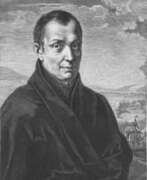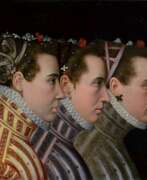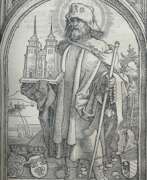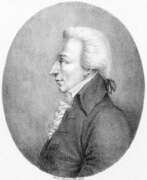Engravers Holy Roman Empire
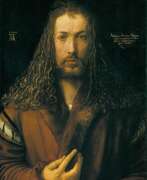

Albrecht Dürer, born on May 21, 1471 in Nuremberg, Germany, is widely regarded as the greatest German Renaissance painter. His contribution to painting and engraving is quite significant and has left a notable mark on the art world. Dürer's early life was spent in Nuremberg, a city that played a crucial role in his development as an artist and was also the site of his death on April 6, 1528. He was the son of the goldsmith Albrecht Dürer the Elder, from whom he initially learned the basics of drawing and metalworking.
Dürer's work is characterized by a combination of Gothic elements with the emerging Renaissance style, which is evident in his woodcuts and engravings. His oeuvre encompasses many themes, including religious works, altarpieces, portraits, and self-portraits. His outstanding prints, such as The Knight, Death and the Devil (1513), St. Jerome in his Study (1514) and Melencolia I (1514), are known for their intricate detail and artistic skill. Dürer was also one of the earliest European landscape painters, as evidenced by his watercolor paintings.
Equally significant are his theoretical writings on mathematics, perspective, and ideal proportions in art. Dürer was not only an artist but also a keen intellectual, his interests encompassing various aspects of culture and science. He served as court painter to Holy Roman Emperors Maximilian I and Charles V, completing several significant art projects for them. Dürer's keen mind and versatile interests brought him into contact with the most prominent figures of his time, including theologians and scientists of the Reformation era.
Dürer's self-portraits are particularly famous, demonstrating not only his artistic skill but also his self-awareness and personal style. These portraits attest to his growing success and confidence as an artist. Dürer's legacy is immense; he influenced not only the art of his time, but also left an indelible mark on the history of European art.
For those interested in the work and legacy of Albrecht Dürer, we recommend subscribing to our updates. Our subscription service is designed to provide information about new sales and auction events related to this remarkable artist. Join us to keep up to date on the latest art and antiques related to Albrecht Dürer.
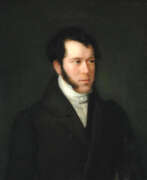

Günther Gensler was a German artist of the mid-nineteenth century. He is known as a painter, draughtsman, graphic artist and printmaker, a representative of the Hamburg art school.
Gensler created more than 120 oil paintings and graphic works during his career. The most famous of them is the painting "Meeting of Members of the Hamburg Artists' Club" in 1840. The master began preparatory work on this group portrait in 1838.
In 2019, Gensler's works were part of the exhibition "The Hamburg School - Rediscovering the 19th Century" at the Hamburger Kunsthalle.
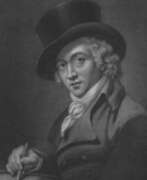

Johann Gerhard Huck was a German artist of the late eighteenth and early nineteenth centuries. He is known as a painter, draughtsman, graphic artist and copperplate engraver.
Huck early in his career worked at the Academy of Arts in Düsseldorf, then studied with the famous engraver Valentine Green in London. The master founded the Academy of Art in Hanover and was court engraver to the Hanoverian royal court. He was also a member of the Chalcographic Society of Dessau. Among his famous works is a portrait of Baron and patron of the arts Friedrich Moritz von Brabach.
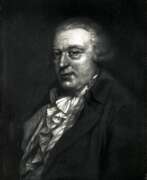

Ferdinand Kobell was a German painter of the second half of the eighteenth century. He is known as a painter, graphic artist, printmaker and landscape painter.
Kobell painted landscapes inspired by the style of Nicholas Berchem. His oil paintings are in many German galleries, but he was much more skillful, according to critics, in conveying the states of nature with an engraving needle. Kobbel is considered a master of landscape etchings, which are recognized as some of the best of the 18th century.
Kobell had seven children, including Wilhelm von Kobell, who also became a landscape, animalist and battle painter.
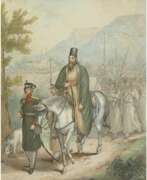

Georg Emanuel Opiz was a German painter of the first half of the 19th century. He is known as a painter, graphic artist, printmaker and author of historical novels, publishing under the pseudonym Bohemius.
Opiz began his career with portraits, but from 1807 moved on to genre subjects. He became famous for his watercolors and gouaches depicting daily life in Paris during the Napoleonic I era. His series of lithographs "Cossacks in Paris", executed from life in 1814, became very famous. In 1819 he published a series of 24 color prints "Scenes of Characters from Life in Paris". In the 1820s, Opiz created a series of watercolors, presumably inspired by trips to Russia and the Ottoman Empire.
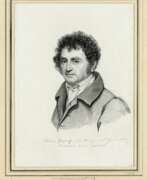

Johann Dominicus Quaglio was an Italian-born German painter of the first half of the 19th century. He is known as an architectural painter and graphic artist of the Romantic era, theater artist, lithographer and printmaker.
Quaglio traveled to various countries, which became a source of inspiration for his many works. He depicted medieval churches, castles, ruins and cities in his works. The master was one of the first to use lithography to recreate Gothic structures in graphic form. His works are historical and architectural documents of the time.
Quaglio was court painter to the Bavarian throne and a member of the Munich and Berlin Academies of Arts. He is considered by critics to have brought architectural painting back to a respectable level.
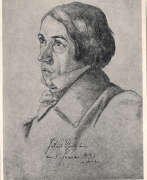

Julius Thaeter was a German painter of the mid-nineteenth century. He is known as a copperplate engraver and reproductionist.
Julius Thaeter created engravings that became famous for their meticulous execution, moderate shading, and accurate reproduction of original works by artists. Among his major works are "The Battle of the Huns" and "The Pandemonium of Babylon" (reproduction by Kaulbach), "Hrimgild and the Corpse of Siegfried" (Schnorr), "The Soul Carrier Charon" and "Parks" (Karstens), "Feats of Mercy of St. Elizabeth, Queen of the Holy Land" (Kaulbach), "The Works of Mercy of St. John the Baptist" (Kaulbach), "The Battle of the Huns" and "The Battle of Babylon" (Kaulbach). St. Elizabeth, Queen of Hungary" (M. von Schwind), illustrations to psalms (G. König), and reproductions of paintings by Cornelius and Raphael.
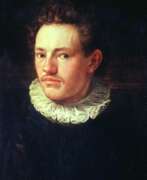

Hans von Aachen was a German painter, renowned for his role as a leading representative of Northern Mannerism. His journey into the art world took him from Rome, where he studied antique sculptures and the works of Italian masters, to Florence and then Venice, securing commissions that would define his early career. Notably, his work caught the attention of the Medici family, leading to significant commissions.
By 1592, von Aachen had become the official painter for Emperor Rudolf II in Prague. This position didn't require him to stay at court, allowing him to work from his residence. His relationship with Rudolf II was pivotal, marking a period where his art flourished under the emperor's patronage, celebrated for mythological paintings and complex allegories. The emperor's appreciation for painting and the arts transformed Prague into a significant art center, fostering a style full of elegance and sensuality known as Mannerism.
Hans von Aachen's style, influenced by Italian Mannerism and northern realism, showcased his versatility through portraits, historical, religious subjects, and allegories. His significant works include the "Allegory of Peace, Art and Abundance," depicting personifications of Peace, Science and the Liberal Arts, and Abundance, celebrated for illustrating the flourishing of these ideals under Rudolf II's reign. This piece, among others, found its home in prestigious collections like the Hermitage Museum in Saint Petersburg.
His contribution to the art world was acknowledged by the European courts, merchants, and the nobility. Even after Rudolf II's death, Hans von Aachen continued his work for Matthias, focusing on imperial portraits until his death in Prague in 1615. His legacy, momentarily overshadowed by the nationalistic perspectives of the 19th century, has been reevaluated, recognizing him as a key figure in European cultural exchange and Mannerism.
For art collectors and experts interested in Mannerism and Hans von Aachen's work, his journey from an admired artist at European courts to a celebrated figure in art history underscores the lasting impact of his work. His ability to navigate the cultural and artistic demands of his time, leaving behind a body of work that continues to be studied and appreciated, makes him a fascinating subject of study.
For updates on new product sales and auction events related to Hans von Aachen, sign up here. This subscription is your gateway to exploring the remarkable works of this distinguished Mannerist painter, ensuring you never miss an opportunity to own a piece of history.


Friedrich Georg Weitsch was a German painter of the late 18th and early 19th centuries. He is known as a painter and printmaker.
Weitsch created landscapes, historical and religious subjects, but a special place in his work was occupied by portraits of aristocrats, as well as ordinary people. His works are in various museums, including the Braunschweig City Museum, the Braunschweig Land Museum, and the Duke Anton Ulrich Museum of Braunschweig-Wolfenbüttel.
